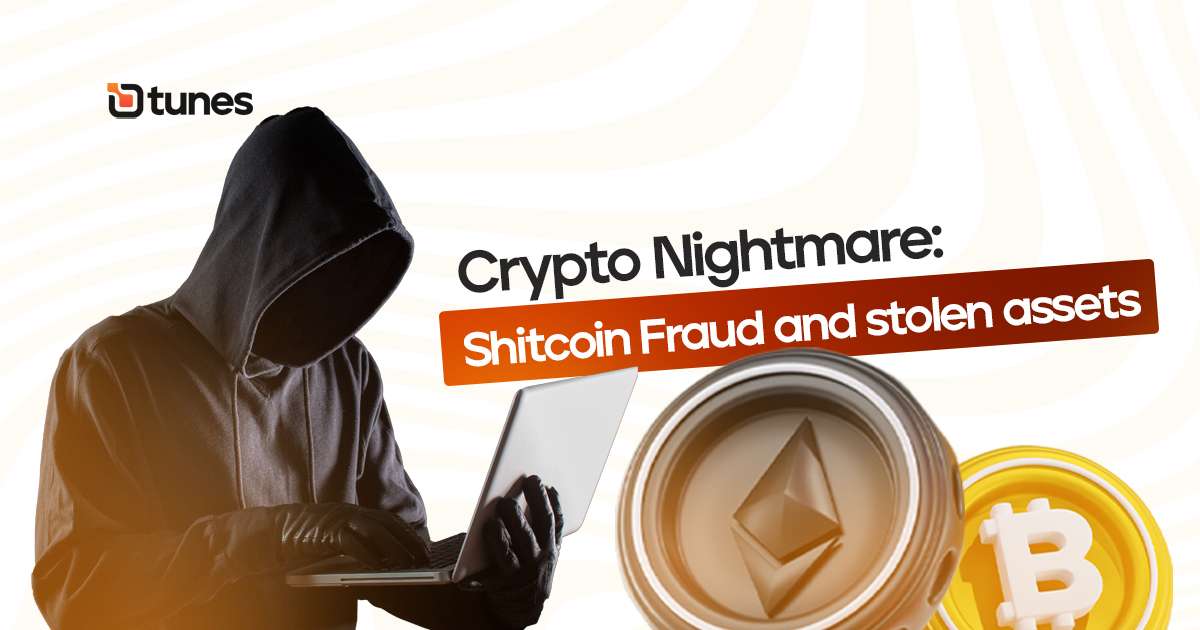
Crypto Nightmares: Shitcoin Fraud and Stolen Assets
Shitcoin Fraud: The world of cryptocurrency has revolutionized the financial landscape, bringing innovative solutions and democratizing access to digital assets. However, amidst the transformative potential, there’s a darker side that has gained notoriety – the realm of “shitcoin fraud.”
Shitcoins, as the name suggests, are cryptocurrencies with little to no value, often created to deceive investors and siphon funds. In this article, we’ll delve into the treacherous world of shitcoin fraud, exploring its nuances, impact, and how to safeguard against it.

What Are Shitcoins?
Shitcoins, simply put, are cryptocurrencies with little utility or substance. They are typically marketed as revolutionary projects with the potential to disrupt industries, but in reality, they lack fundamental technology, use cases, or credible development teams. These coins are created to attract investments, and once the funds are gathered, they fade into obscurity, leaving investors with worthless tokens.
Is Shitcoin the Same as Meme Coins?
While both shitcoins and meme coins fall under the category of less established cryptocurrencies, there’s a distinction between the two. Meme coins are often based on popular culture references and memes, aiming to create a community around shared humor. Shitcoins, on the other hand, lack any inherent value or genuine purpose. They exploit market trends and hype to lure investors, without offering any substantial technology or utility.
5 Known Shitcoin Frauds in the Past
- Bitconnect: One of the most infamous examples, Bitconnect promised guaranteed returns through lending. However, it turned out to be a Ponzi scheme, ultimately collapsing and causing massive investor losses.
- OneCoin: Operating as a multi-level marketing scheme, OneCoin claimed to have its own blockchain, but investigations revealed it was built on a centralized database. The scheme defrauded investors of billions.
- Pincoin and iFan: These Vietnamese projects promised high returns and a referral system. After collecting significant investments, the operators disappeared, leaving investors empty-handed.
- LoopX: Touted as an algorithmic trading platform, LoopX vanished with investors’ funds after an ICO, illustrating the dangers of unverified claims.
- Prodeum: This small-scale scam highlighted the absurdity of some fraudulent projects. Prodeum claimed to create a platform for selling fruits and vegetables using blockchain, but it disappeared after raising a paltry sum.
How to Spot and Avoid Shitcoin Projects
- Research: Investigate the project thoroughly. Look for credible information about the team, technology, and use case. Genuine projects have transparent whitepapers and accessible development teams.
- Community Engagement: Legitimate projects have active communities discussing the project’s progress and potential. Lack of engagement or an overly aggressive marketing approach can be red flags.
- Unrealistic Promises: Be cautious of projects promising astronomical returns with little effort. If it sounds too good to be true, it probably is.
How to Spot a Pump and Dump Shitcoin Project
Pump and dump schemes involve artificially inflating the price of a coin through misleading information, then selling off quickly once the price rises. Here’s how to identify them:
- Sudden Hype: If a coin’s value and popularity surge rapidly due to massive marketing efforts, it might be a pump and dump scheme.
- Lack of Substance: Research the coin’s technology and use case. If there’s no real utility, the project might be a target for manipulation.
- Unpredictable Price Swings: Be wary of coins with extreme price volatility and sudden price crashes. These could indicate manipulation.
The Relevance of Whitepapers and Smart Contracts
Whitepapers and smart contracts are crucial aspects of assessing a cryptocurrency’s legitimacy. A comprehensive whitepaper outlines the project’s goals, technology, use cases, and roadmap. Smart contracts, if implemented transparently, can provide evidence of a project’s functionality. Lack of a whitepaper or smart contract code raises significant concerns.
Impact of Shitcoin on the Crypto Industry
Shitcoin fraud tarnishes the reputation of the entire cryptocurrency industry. It erodes trust, discourages potential investors, and triggers regulatory scrutiny. The crypto space’s growth and mainstream adoption hinge on weeding out fraudulent projects and promoting genuine innovation.
Stablecoin Vs. Shitcoin
Stablecoins, unlike shitcoins, are a category of cryptocurrencies designed to minimize price volatility by pegging their value to an underlying asset, such as a fiat currency or a commodity. They offer stability and are often used for trading and as a gateway between traditional and crypto markets.
USDT as a Stablecoin
Tether (USDT) is one of the most well-known stablecoins. It’s pegged to the US Dollar, making it a popular choice for traders seeking to hedge against market volatility. Its liquidity and wide acceptance have made it a staple in the cryptocurrency trading ecosystem.
Best IOS/Android App to Sell USDT in Nigeria
In Nigeria, the best app to sell your USDT is Dtunes. Dtunes offers the best price you can find in the market for your USDT. The platform also provide a user-friendly interface, secure transactions, and instant payment to your naira account.



